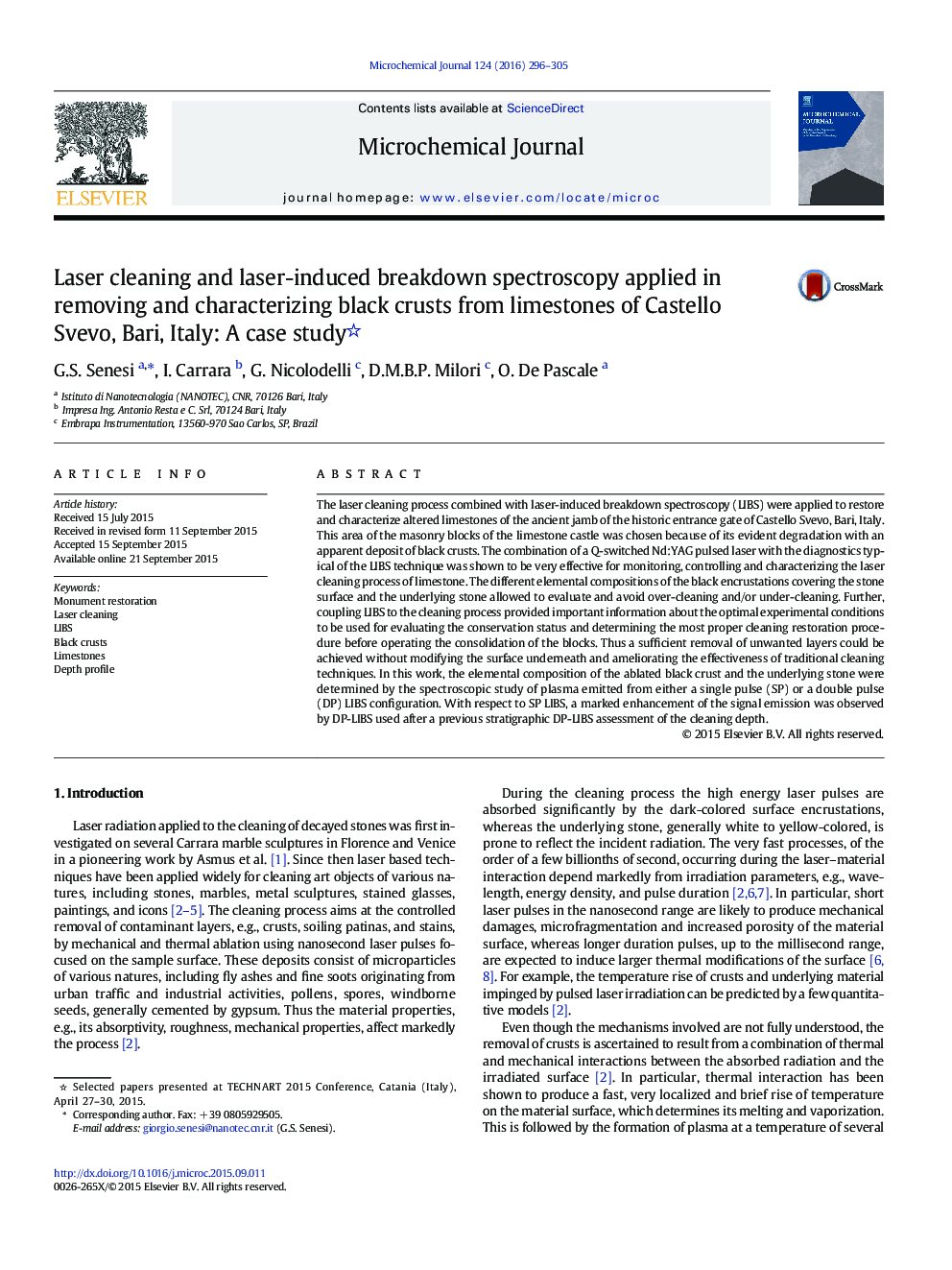| Article ID | Journal | Published Year | Pages | File Type |
|---|---|---|---|---|
| 7642178 | Microchemical Journal | 2016 | 10 Pages |
Abstract
The laser cleaning process combined with laser-induced breakdown spectroscopy (LIBS) were applied to restore and characterize altered limestones of the ancient jamb of the historic entrance gate of Castello Svevo, Bari, Italy. This area of the masonry blocks of the limestone castle was chosen because of its evident degradation with an apparent deposit of black crusts. The combination of a Q-switched Nd:YAG pulsed laser with the diagnostics typical of the LIBS technique was shown to be very effective for monitoring, controlling and characterizing the laser cleaning process of limestone. The different elemental compositions of the black encrustations covering the stone surface and the underlying stone allowed to evaluate and avoid over-cleaning and/or under-cleaning. Further, coupling LIBS to the cleaning process provided important information about the optimal experimental conditions to be used for evaluating the conservation status and determining the most proper cleaning restoration procedure before operating the consolidation of the blocks. Thus a sufficient removal of unwanted layers could be achieved without modifying the surface underneath and ameliorating the effectiveness of traditional cleaning techniques. In this work, the elemental composition of the ablated black crust and the underlying stone were determined by the spectroscopic study of plasma emitted from either a single pulse (SP) or a double pulse (DP) LIBS configuration. With respect to SP LIBS, a marked enhancement of the signal emission was observed by DP-LIBS used after a previous stratigraphic DP-LIBS assessment of the cleaning depth.
Related Topics
Physical Sciences and Engineering
Chemistry
Analytical Chemistry
Authors
G.S. Senesi, I. Carrara, G. Nicolodelli, D.M.B.P. Milori, O. De Pascale,
